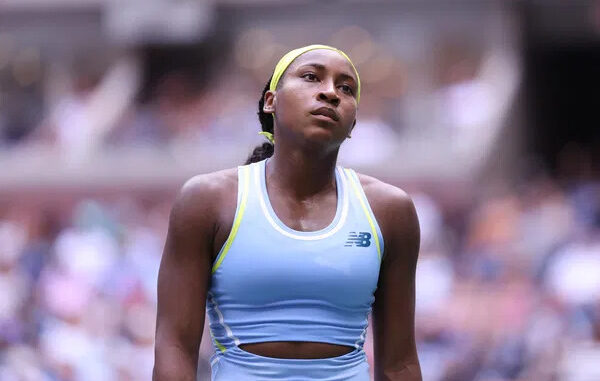
Even for a player of Coco Gauff’s immense talent and success, a single glaring weakness can become a significant obstacle to reaching the pinnacle of the sport. While the world’s media often focuses on her powerful forehand and unwavering determination, a persistent flaw has been a constant source of concern: her second serve. This vulnerability has been noted by many in the tennis world, including a prominent figure with deep ties to elite coaching, who believes the issue is fundamentally a matter of ingrained technique that must be addressed from the ground up.
Rick Macci, the renowned coach who famously helped shape the early careers of tennis legends Venus and Serena Williams, has been outspoken about what he perceives as a critical weakness in Gauff’s game. In a recent interview, Macci offered his unsolicited advice, stating with confidence, “There’s no doubt I could flip the script with her second serve and forehand. No doubt about it, but it’d have to be done in the off‑season.” Macci’s comments underscore a widely held belief that Gauff’s second serve is a recurring problem, a point supported by her on-court statistics. In 2024, she led the WTA Tour with a staggering 430 double faults in 71 matches, and through the first part of 2025, she has continued to lead the circuit in that undesirable category, with 250 double faults in just 41 matches.
Macci believes the root of the problem lies in Gauff’s fundamental biomechanics. He describes her serve as having “a muscle memory that’s baked in extra crispy,” due to her unique physical attributes and early training. Instead of making minor adjustments, Macci proposes a more radical overhaul, including changing her stance to a “platform” position to “re-programme the reflexes from the beginning.” He argues that simply tweaking her technique is like treating a symptom rather than the underlying cause. “Everybody’s looking at a symptom,” he remarked, “and they’re not really understanding the origin or the culprit.” He is so confident in his diagnosis that he claims the issue could be “corrected” in just “one hour,” but only if Gauff is willing to make a fundamental change to her mechanics.
This critique comes at an interesting time in Gauff’s career. Despite her struggles with the second serve, she has achieved remarkable success. She is currently ranked No. 2 in the world and has already captured her second Grand Slam title at the 2025 French Open, where she defeated Aryna Sabalenka in a thrilling final. This victory on the clay courts of Paris further cemented her status as one of the sport’s elite competitors, demonstrating that her mental fortitude and all-around game can overcome her serving inconsistencies. However, her early exit from Wimbledon 2025—a first-round upset to Dayana Yastremska—serves as a reminder that her serve, particularly on a quick surface like grass, can be a liability.
The challenges with her forehand have also been a point of contention for some coaches. One of her former junior coaches, Sly Large, lamented that after she left his tutelage and went to work with others, including Patrick Mouratoglou, the forehand was no longer a focus. “My only guess is, I didn’t see her for a couple of years, my concept is that they must have taken their eye off of her forehand,” Large said, adding, “What I’m surprised about, even when the new coaches saw it, they did not make an effort to clean it up because she was winning.” This highlights the difficult decision a coach must make when a player is winning despite technical flaws. Do you risk breaking a winning formula to fix a weakness?
The conversation around Gauff’s technique is a testament to the high expectations placed upon her. As a two-time Grand Slam champion at just 21 years old, she is widely considered a future world number one. However, as Macci and others suggest, a truly dominant and consistent reign at the top will likely require her to address the technical flaws that continue to hold her back, starting with her second serve and forehand. While she has proven her ability to win with what she has, a fundamental shift could unlock an even higher level of performance and make her a virtually unstoppable force on the WTA tour,
Leave a Reply